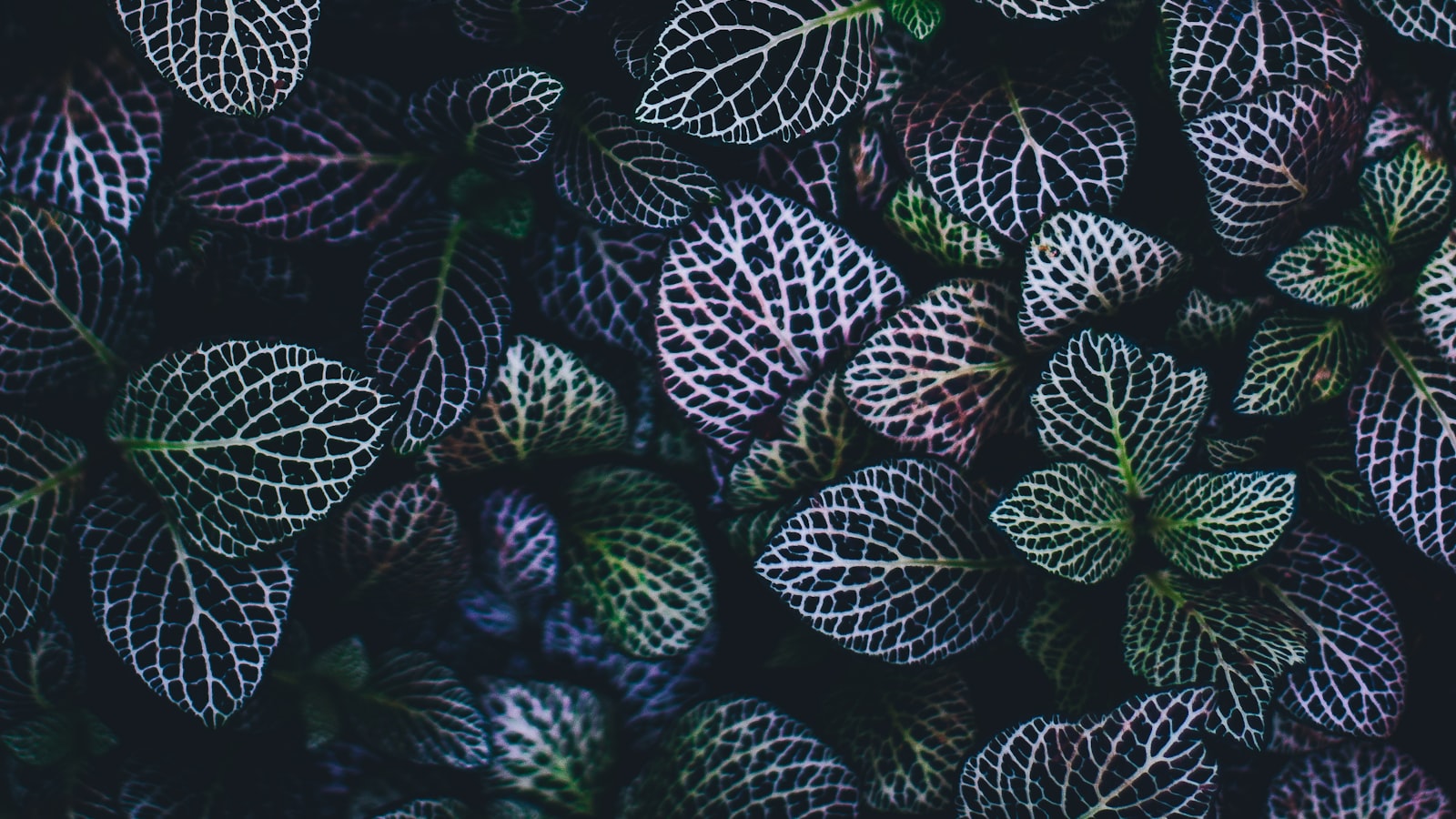Welcome to a world where green thumbs flourish, and plants thrive with endless care and affection. Whether you’re a seasoned horticulturist or a budding enthusiast, the importance of nurturing your plants cannot be stressed enough. In this article, we embark on a journey that will lead us through the mesmerizing realm of plants and their needs. With essential plant care guides awaiting your eager anticipation, we offer a bountiful collection of knowledge to help you nourish and sustain the verdant beauty that graces your home. So, put on your gardening gloves, grab your watering can, and let’s dive into the tender world of plant care, where every leaf holds a secret, waiting to be unveiled.
Understanding the Basics: A Beginner’s Guide to Plant Care
Starting Off Right: Choose the Perfect Spot
<p>When it comes to plant care, location is key! Each plant has its own sunlight requirements, so it's essential to find the perfect spot in your home to provide the right amount of sunlight. While some plants thrive in bright, direct sunlight, others prefer indirect light or shade. Take note of how much light each area of your home receives throughout the day and match it with the needs of your plants.</p>
<p>Additionally, consider the temperature and humidity levels of the chosen location. Some plants prefer warm, tropical environments, while others thrive in cooler temperatures. Keep in mind that placing your plants near drafty windows or heating vents may cause stress or damage to their delicate leaves. By paying attention to these factors, you can ensure that your plants are placed in their ideal environment to thrive and grow.</p>The Watering Dilemma: Finding the Balance
Watering your plants may seem like a simple task, but it’s important to strike the right balance. Different plants have varying water requirements, so it’s crucial to understand the needs of your green companions. Overwatering can cause root rot and other moisture-related problems, while underwatering can lead to wilting and dehydration.
One way to determine if your plants need watering is by checking the moisture level of the soil. Stick your finger about an inch deep into the soil and if it feels dry, it’s time to water. However, be cautious not to drown your plants in water. Remember that plants in smaller pots will generally require more frequent watering due to their limited soil volume. Keeping a consistent watering schedule and adjusting it based on seasonal changes will help prevent both over and underwatering.
Tips for Proper Watering:
- Use room temperature water to prevent temperature shock to the plant roots.
- Avoid watering the leaves of your plants to prevent fungal growth.
- Ensure proper drainage by using pots with drainage holes or adding a layer of rocks at the bottom.
Feeding your Green Companions: The Art of Fertilization
To maintain healthy and vibrant plants, proper fertilization is crucial. Fertilizers provide essential nutrients that may be lacking in the soil, promoting growth and overall plant health. Different plants have specific nutritional requirements, so it’s important to choose the right type of fertilizer.
Before applying fertilizer, it’s essential to water your plants thoroughly to avoid root burn. Follow the manufacturer’s instructions regarding the application frequency and dosage. Over-fertilization can harm your plants, so it’s better to underfeed than overfeed. As a general rule, it’s best to fertilize your plants during the active growing season, typically spring and summer, and reduce or stop fertilization during the dormant period.
Quick Tips for Fertilization:
- Use a balanced, all-purpose fertilizer for most houseplants.
- Avoid fertilizing newly repotted plants for at least six weeks.
- Regularly check the soil pH, as some plants prefer slightly acidic or alkaline conditions.
Mastering the Art of Watering: Optimizing Moisture Levels for Healthy Growth
Welcome to our comprehensive guide on nurturing your plants and optimizing their growth through effective watering techniques. In this post, we will delve into the art of watering and provide you with essential plant care guides that will help you achieve healthy and vibrant foliage. By understanding the importance of moisture levels and how to optimize them, you’ll be well on your way to becoming a plant care expert!
The Basics of Watering:
- Know your plants: Each plant has unique water requirements, so it’s crucial to research and understand the specific needs of your plants. Consider factors such as sunlight exposure and humidity levels to determine the right watering routine.
- Understand soil moisture: Testing the moisture level of your soil is key to prevent overwatering or underwatering. Invest in a moisture meter or simply use your finger to assess the soil’s dampness. Remember, consistency is key!
- Watering techniques: Opt for a gentle and targeted watering approach to ensure roots receive adequate moisture without causing water stagnation or run-off. Techniques like bottom watering, drip irrigation, or carefully using a watering can near the base of the plants can help promote even and efficient hydration.
Tips for Optimizing Moisture Levels:
- Mulching: Create a moisture-retaining barrier around your plants by adding a layer of organic mulch. This helps prevent water evaporation, regulates soil temperature, and reduces weed growth.
- Regular monitoring: Keep a close eye on your plants to ensure they don’t experience water stress. Monitor their foliage for signs of over or underwatering, such as yellowing leaves, wilting, or excessive dryness.
- Consider external factors: Environmental conditions such as temperature, humidity, and seasonality play a role in plant hydration requirements. Adjust your watering routine accordingly, taking into account these external factors.
Key Takeaways:
| Know Your Plants | Each plant has unique watering needs, so research and understand their requirements. |
| Test Soil Moisture | Regularly assess soil dampness using a moisture meter or your finger. |
| Optimize Watering Techniques | Choose gentle and targeted watering methods to avoid over or underwatering. |
Unveiling the Secrets of Fertilizer: Choosing the Right Nutrients for Vibrant Plants
Fertilizer is the secret ingredient that can transform your garden into a vibrant oasis. But with so many options available, how do you choose the right nutrients for your plants? We’re here to unveil the secrets of fertilizer and provide you with essential plant care guides to nurture your plants to their fullest potential!
First and foremost, understanding the nutrient needs of your plants is crucial. Different plants require different ratios of key nutrients like nitrogen, phosphorus, and potassium. Leafy greens, for example, thrive with high nitrogen levels, while fruit-bearing plants need a balanced mix. With our comprehensive nutrient guide, you’ll be able to identify the specific needs of your plants and choose the best fertilizer accordingly.
Next, consider the different types of fertilizers available in the market. Organic fertilizers, such as compost and manure, are derived from living matter and enhance soil fertility over time. On the other hand, synthetic fertilizers offer quick and targeted nutrient replenishment. Our article explores the pros and cons of each type, helping you make an informed choice based on your gardening goals and preferences.
| Plant | Nitrogen | Phosphorus | Potassium |
|---|---|---|---|
| Tomatoes | High | Medium | High |
| Lettuce | High | Low | Medium |
| Carrots | Medium | Low | Medium |
| Roses | Medium | High | Medium |
Lastly, timing and application methods also play a crucial role in optimizing fertilizer effectiveness. Our plant care guides go in-depth on how and when to apply fertilizers for different types of plants, ensuring that the nutrients are absorbed efficiently and supporting healthy growth. From top-dressing to foliar spraying, we provide step-by-step instructions to boost your gardening success!
Harnessing the Power of Sunlight: Maximizing Light Exposure for Lush Greenery
Nurture Your Plants: Essential Plant Care Guides Await!
Do your plants yearn for more sunlight? Don’t worry, we’ve got you covered! Maximizing light exposure is crucial for ensuring vibrant and healthy greenery. Here are some essential tips and tricks to help you harness the power of sunlight and give your plants the nourishment they need.
1. Understanding Light Requirements:
Each plant has its own unique light requirements. Take the time to research and understand the specific needs of your green companions. Some plants thrive in direct sunlight, while others prefer partial shade. Determine which areas of your home or garden receive the most sunlight and place your plants accordingly. Remember, providing the right amount of light can dramatically impact their growth and overall well-being.
2. Positioning for Optimal Sunlight:
Once you know your plants’ light requirements, it’s time to find the perfect spot for them to bask in the sun. Consider factors like the intensity and duration of sunlight throughout the day. South-facing windows typically receive the most sunlight, while east and west-facing windows offer moderate light. Rotate your plants periodically to ensure they receive even light exposure from all angles, promoting balanced growth and preventing any leaning towards the light source.
3. Supplementing with Artificial Lighting:
If natural light is limited in your space, fear not! You can always supplement with artificial grow lights. LED grow lights offer a cost-effective and energy-efficient solution to mimic the benefits of sunlight. When using grow lights, adjust the distance between the light source and your plants according to their light requirements. Keep a close eye on their response to ensure they are not getting too much or too little light.
Remember, maximizing light exposure is just one aspect of plant care. Stay tuned for more essential plant care guides to nurture your leafy companions and help them thrive!
As we reach the end of this verdant journey, it’s time to bid farewell, but not without leaving you armed with the essential tools to nurture your plants. With a little bit of care and a touch of love, your leafy companions will flourish and bring life to your living spaces.
Remember, the key to successful plant care lies in understanding their unique needs and providing them with the right environment. From the sun-seeking succulents to the shade-loving ferns, each plant has a story to tell and a language to decipher.
In this guide, we’ve woven together the tapestry of plant care, exploring the magical world of pest control, the nuances of watering, the art of pruning, and everything in between. Unraveling these secrets will enable you to unleash your inner green thumb in the most splendid of ways.
As your plants grow, so will your connection with nature. You’ll find solace in their steady presence, marvel at the delicate dance of life they perform, and witness the miracles that unfold from a single seed. The rewards of your dedication will come in the form of vibrant blossoms, lush foliage, and the joy that can only be found in watching a tiny sprout emerge from the soil.
So, embark on this horticultural adventure armed with newfound knowledge and boundless enthusiasm. Allow your inquisitiveness to guide you as you delve deeper into the world of gardening, discovering the secrets hidden within the petals and leaves.
Whether you’re a seasoned gardener or just beginning to cultivate your green patch, remember that every plant is like a melody waiting to be played, each leaf a brushstroke waiting to paint a masterpiece. Patience and persistence will be your allies, and the rewards will be worth every effort.
Now, armed with the essential care guides you’ve discovered, go forth and nurture your plant companions. Let them thrive and flourish under your loving care. Remember, as you breathe life into your plants, they will in turn breathe life into your surroundings, illuminating your spaces with their natural grace and beauty.
May your journey into the world of plant care be bountiful, fulfilling, and filled with wonder. Happy gardening!



